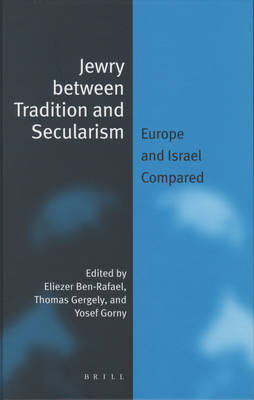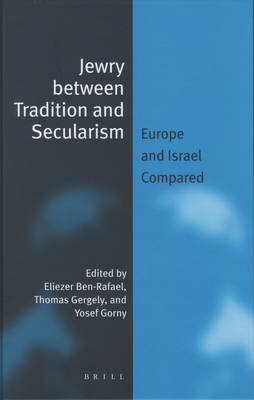
- Afhalen na 1 uur in een winkel met voorraad
- Gratis thuislevering in België vanaf € 30
- Ruim aanbod met 7 miljoen producten
- Afhalen na 1 uur in een winkel met voorraad
- Gratis thuislevering in België vanaf € 30
- Ruim aanbod met 7 miljoen producten
Zoeken
Jewry Between Tradition and Secularism
Europe and Israel Compared
€ 267,45
+ 534 punten
Omschrijving
Are Jews today still the carriers of a single and identical collective identity and do they still constitute a single people? This two-fold question arises when one compares a Hassidi Habad from Brooklyn, a Jewish professor at a secular university in Brussels, a traditional Yemeni Jew still living in Sana'a, a Galilee kibbutznik, or a Russian Jew in Novossibirsk. Is there still today a significant relationship between these individuals who all subscribe to Judaism? The analysis shows that the Jewish identity is multiple and can be explained by considering all variants as "surface structures" of the three universal "deep structures" central to the notion of collective identity, namely, collective commitment, perceptions of the collective's singularity, and positioning vis-à-vis "others."
Specificaties
Betrokkenen
- Uitgeverij:
Inhoud
- Aantal bladzijden:
- 321
- Taal:
- Engels
- Reeks:
- Reeksnummer:
- nr. 6
Eigenschappen
- Productcode (EAN):
- 9789004151406
- Verschijningsdatum:
- 28/04/2006
- Uitvoering:
- Hardcover
- Formaat:
- Genaaid
- Afmetingen:
- 165 mm x 244 mm
- Gewicht:
- 716 g

Alleen bij Standaard Boekhandel
+ 534 punten op je klantenkaart van Standaard Boekhandel
Beoordelingen
We publiceren alleen reviews die voldoen aan de voorwaarden voor reviews. Bekijk onze voorwaarden voor reviews.










